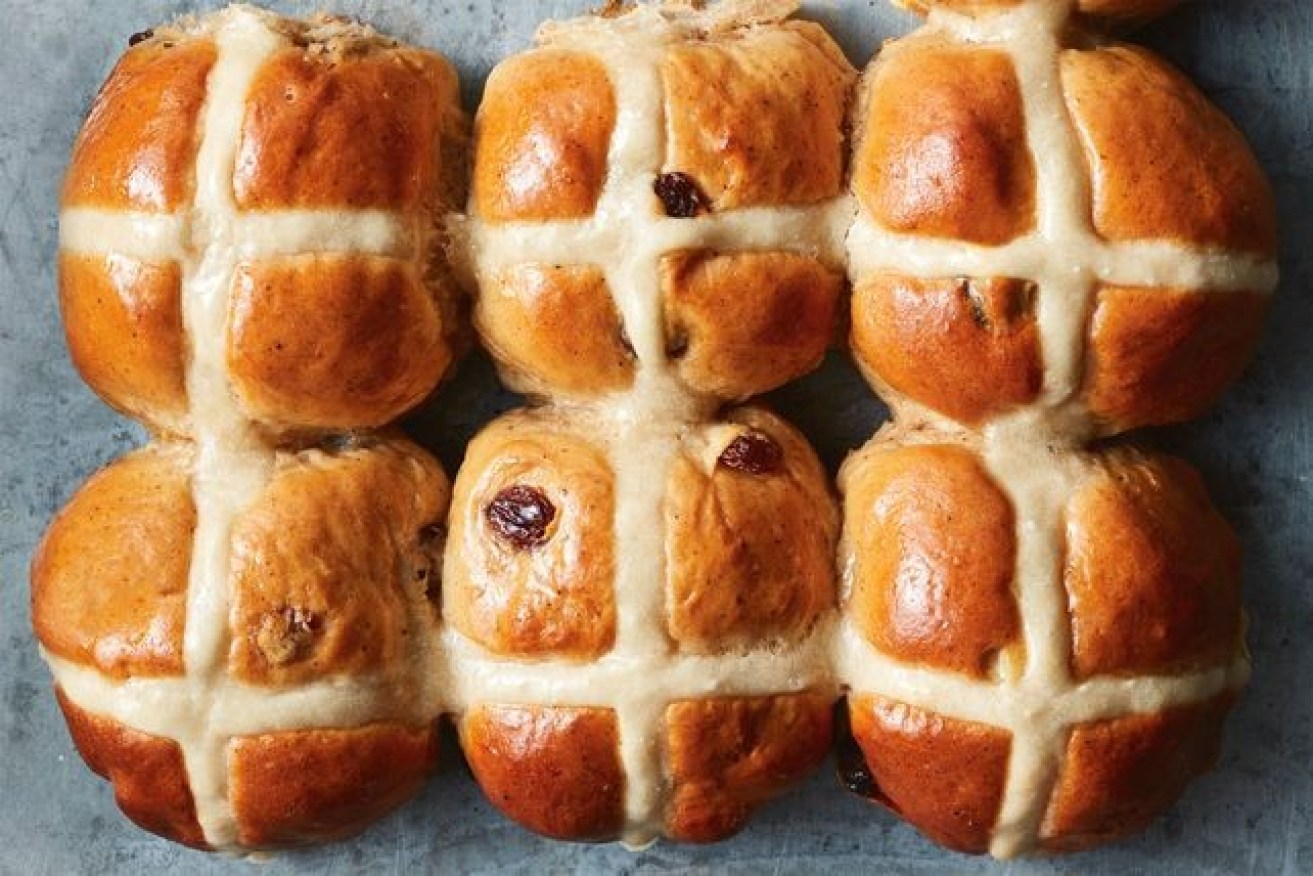Origin of hot cross buns: A brief history of the Easter treat

Versions of the hot cross bun even appeared in ancient Greece. Photo: Taste Magazine
With Easter right around the corner, the distinctive smell of hot cross buns is dominating bakeries and supermarkets.
While some hot cross buns hit shelves as far back as New Year’s Day, the sweet bun is usually associated with the end of Lent.
Nowadays, there are many variations to the traditional recipe with chocolate, toffee and apple cinnamon hot cross buns. Even Vegemite have shared their savoury take on the Easter treat.
In 2017, Woolworths sold 72 million hot cross buns in Australia.
Why are they called hot cross buns?
A traditional hot cross bun is a spiced, yeasted bun.
It is traditionally made with raisins or currants and is marked with a cross on top. The cross is usually piped using a flour and water paste but can also be made from shortcrust pastry.
For Christians, the cross represents the crucifixion of Jesus. The spices inside the buns symbolise the spices put on the body of Jesus after he died.
The buns are best served hot, hence how they received their name. Butter is optional depending on personal tastes.

Young girls at a London bakery, stamping crosses on the hot cross buns for Easter in 1930. Photo: Getty
Where do hot cross buns originate from?
There are many theories on the origin of the bun.
One theory dates back to the 14th century when an Anglican monk baked the buns at St Albans Abbey and called them the ‘Alban Bun’. He then distributed them to the poor on Good Friday.
They soon gained popularity around England and became a symbol of the Easter weekend.
In 1582, the London clerk of markets issued a ban on the sale of the buns by bakers. This was because of superstitions that the buns carried medicinal or magical properties.
Elizabeth I of England passed a law permitting them only to be sold at Easter and Christmas.
The English got around this law by baking the buns at home and eventually the law was rescinded due to the popularity of the treat.
The first recorded reference to hot cross buns was in ‘Poor Robin Almanac‘ in the 1700s.
It read: “Good Friday come this month, the old woman runs. With one or two a penny hot cross buns”.
What is the hot cross bun rhyme?
The English nursery rhyme was first published in a book called the Christmas Box in London, 1798. Some records claim that the rhyme was also a catch-call for street vendors selling buns around Easter time.
‘Hot cross buns, hot cross buns!
One ha’penny, two ha’penny, hot cross buns!
If you have no daughters, give them to your sons,
One ha’penny, two ha’penny, hot cross buns!’






